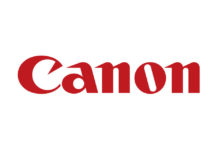 How many times have you wondered how your competitor could afford to sell a job at a ridiculously low price?
How many times have you wondered how your competitor could afford to sell a job at a ridiculously low price?
In many cases, the other guy actually can’t afford it. While these shops may cover their direct material and labor costs, they may not have allocated a reasonable share of the overhead.
Eventually many of these businesses lose enough money that they close their doors.
That might sound like good news to you if they’re a competitor; but unfortunately, these businesses are often replaced by shops that also do not know how to estimate and price their work.
In many cases, correctly estimating a job is the difference between making the sale and not making it. Ideally you want to price your work so that your business actually covers all of its expenses and makes a reasonable amount of profit.
What makes costing so confusing to so many is that there are so many methods for estimating jobs. What I will explain in this two-part series is the method that I used when I worked as an estimator for a large printer. It is based on allocating overhead to direct labor, which is one of the easiest and most popular ways for a small- or medium-size shop to cost their jobs.
The method involves adding up all of your direct costs for a project and then allocating an appropriate amount of your indirect costs. Direct costs include all of the raw labor, raw material, and other direct costs, which are easily traceable to a particular job. That’s the easy part of estimating.
The tricky part is deciding how to apportion a fair amount of the overhead to the job.
In the estimating method that I suggest, overhead is allocated to direct labor. To do that, you first need to total all of your shop and administrative costs for the year. These costs include all of the indirect charges (both fixed and variable), which are impossible or extremely difficult to trace to a particular job.
Then you need to determine how many direct labor hours are charged to jobs in that year. With this information, you can calculate your burdened shop rate, which is multiplied by the number of direct labor hours estimated for the job.
After burdening your raw material expense, you simply add up all of the burdened labor and material and other direct expenses to arrive at an estimated job cost. To that cost, you apply your profit to arrive at a selling price.
That’s the Reader’s Digest version. What follows this month and next month is the detailed explanation of how this estimating system works.
Direct costs are comprised of three components: direct labor, direct material, and other direct.
In discussions of labor costs, you probably have heard many different terms used. Sometimes these terms are used incorrectly. To avoid any confusion, let’s start with a few basic financial definitions, which I’ll go over in this issue.
Direct Labor
Direct labor refers to the actual wages paid that you pay workers in your shop to complete a particular activity in the production of a job. It typically only applies to line workers and does not include any wages or salaries paid to supervisors or office personnel.
Direct labor hours are not considered part of shop overhead. Direct labor usually does not include any benefits (health insurance, dental insurance, payroll taxes etc.), nor does it factor in vacations, holidays, or sick time. Instead these benefits should be categorized as part of the overhead (shop and administrative costs).
Direct labor only applies to costs, which are directly traceable to a specific job. This can include the time for machine set up, production time, and clean up.
As an example of estimating direct labor costs for a job, you may determine that to plotter cut, weed, premask, and apply a graphic to a sign blank will take 1.25 hours at an average shop rate of $12 per hour for a total of $15 (1.25 hours production time x $12/hour = $15 direct labor cost).
Indirect Labor
This refers to the number of labor hours devoted to tasks other than production, such as answering phones, speaking to walk-in customers, performing housekeeping activities, or routine maintenance on shop equipment. Whereas direct labor hours are not part of shop overhead, indirect labor is. In a small shop, where employees wear many different hats, as much as 40 percent of labor hours are indirect labor.
Burdened Labor
A fully burdened labor rate would include all of the benefits, payroll taxes, insurance, and any other employment costs that you pay in addition to the employee’s wages to keep them on the job. This burdened rate is not the same as a shop rate, which uses direct labor hours as a cost driver for allocating overhead expenses.
Because direct labor is related to every aspect of indirect costs, it is an effective cost driver for allocating overhead to jobs. However what happens when you are just buying and selling material and services and no direct labor is charged to a job? No overhead is allocated.
In addition to allocating a portion of overhead costs to direct labor costs, you should also apply a burden rate to raw material costs and other direct expenses. A “burden rate” is another term for applying a percentage of indirect costs or overhead to the direct costs of a job.
In the case of assigning a burden rate to direct material and other direct costs, many shops will apply 10 percent to these costs. For example, if the raw material cost (vinyl film, ink, laminate, and application tape) for a job is $100.00, an additional 10 percent (calculated by dividing by .9) would result in a burdened material cost of $111.11.
Applying a burden rate to direct material and other direct cost, will apply a rightful amount of overhead to jobs in which you are merely buying material (such as striping) or outsourcing a service (such as vinyl application) and reselling these products or services.
Overhead Allocated to Direct Labor
For a job shop, such as a sign shop or printer, the simplest way to allocate overhead to your jobs is to divide it evenly across the total number of direct labor hours. By doing this, you will calculate your shop rate. (Note: Determining your shop rate is covered in detail in next month’s article.)
Direct Material
Direct material refers to the raw material that is estimated for the production of a job. When I worked for fleet graphics screen printers, these materials included the cost of the vinyl film, ink, clear coat, and premask (application tape).
In estimating the materials needed, you should always factor in a percentage for material loss or scrap. For many jobs, an additional 10 percent may cover you. That percentage, however, could be higher depending on the difficulty involved in producing the job.
Other Direct Costs
This refers to any additional costs for tooling, materials, or services, which are required to produce a specific job. In sign making, other direct could include any special paint or tools that you would only use on the job it was ordered for. In printing this could entail color separations or design services. It might also include any part of the production costs that you need to farm out to another company.
Indirect Costs
These expenditures are not directly traceable to a job and consequently not directly charged to the manufacturing of a project. Nevertheless a fair amount of those indirect costs must be apportioned to the job.
Some examples of indirect costs are shop overhead, advertising expense, supervisor salaries, and taxes. Indirect costs can also include direct material expenditures for supplies, which are impractical to trace to specific projects, such as screws, glue, or lettering enamel. In these cases, it makes more sense to treat charges for materials as part of shop overhead.
Next month, we will explore how this terminology helps you calculate your shop rate.
By Jim Hingst
Photo: Shutterstock.com











